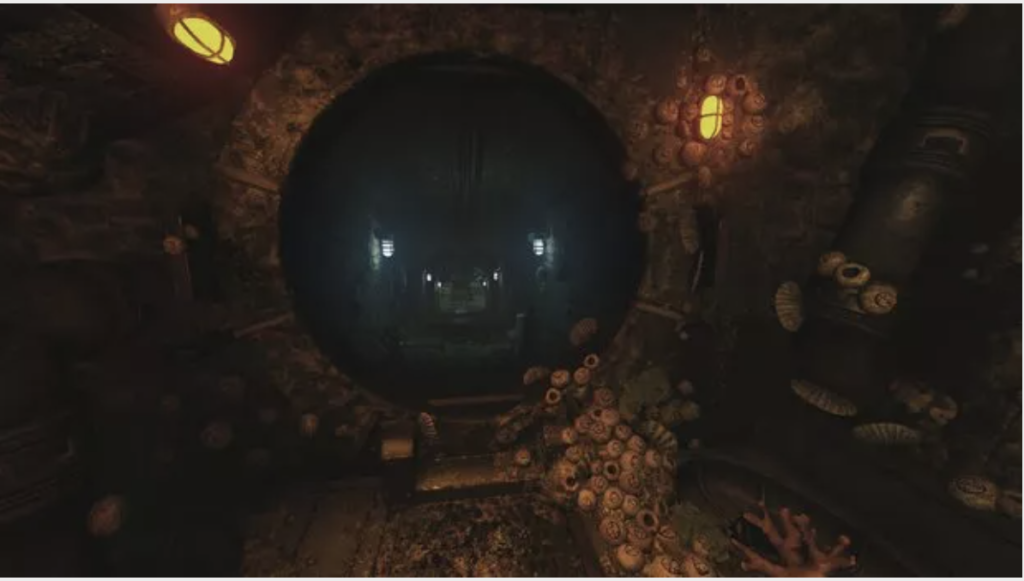
INCLUDES SPOILERS OF SOMA:
Fictional Games’ Survival/Body Horror dreamchild, 2015’s “Soma”, takes its players through a deeply fascinating and alluring yet simultaneously repulsive story that spans 100 or so years. Different story guides, mainly the robotic form of Catherine Chun, hold the disembodied hand of the player via our first person stand-in, Simon, as they walk him through the fact that he has lost his body and is an implanted scanned consciousness in a foreign, mish-mashed together form, as well as the fact that the world has basically ended due to a comet splattering planet Earth, leading them to be trapped in an underwater bunker world.
What I found most interesting about this game is the tension housed within the classic horror trope of first person vision. In her video essay “I, Monster: The First-Person POV in Horror Cinema”, Leigh Singer discusses how horror genre’s tendency to show first-person monster POVs is utilized by the artist to try to both instill fear and unease but also to align with the monster’s sympathies. Moreover, the horror genre loves to invoke the fear of the unknown, especially by keeping things infamously just out of sight. In Freud’s “Das Unheimliche” he writes about how the uncanny requires to twisting of what was once familiar into the unfamiliar. The manipulation or snuffling out one of our main senses, sight, provides a powerful opportunity for this twisting to occur. In the edges of our vision, in the dark, once known shapes warp into frightening things. The coat on the chair becomes a monster. Mysterious piles on the floor certainly must be moving, right?! H.P. Lovecraft’s “The Dunwich Horror” demonstrates this well, with the titular monster remaining invisible to the naked eye. We can only ever catch glimpses of its destructive powers and hints as to its size, though its true body remains largely a mystery. It also is a double, a twin, another marker of the uncanny according to Freud.
I evoke these works in order to address the troubling horror and tension that comes from the paradoxical problem of double bodies yet remaining bodiless while trapped within the scaffolding that first person in “Soma” provides. The first person mechanic of this game creates a sense of disembodiment. When we are moving, we can interact with objects and people and complete tasks, but we are ultimately formless in our own view. What’s more, the story directly draws our attention to the horror of our bodies and the duality/destruction of them, the unfamiliarity of them, the wrongness of being in something that doesn’t belong to us. We are our own doubles, yet are denied the view of our current form. Our bodies are something we cannot see easily because of the obscuring that the first person framework enforces. That is part of the genius of “Soma”– we are so heavily focused on the one thing we cannot truly see, except for the moment where Simon finds his original body. Unanimated and unconscious.

Voyeurism, here, in this scene, in this slice of body horror, takes on a new effect. I propose that the tension found in the collapsing of our psychic distance with the character that the first person perspective provides, and our paradoxically troubling, disembodied, voyeuristic obsession with body doubles because of the brain scanning technology, serves to significantly magnify the body horror felt in “Soma”. We are the monster. We are the hero. We can’t see the thing that we fear the most, and that’s what makes it so. Through tools like this, “Soma” asks us to question who we really are with a devilishly explosive sincerity that’s difficult to ignore.


